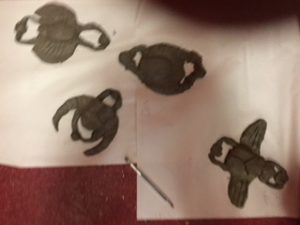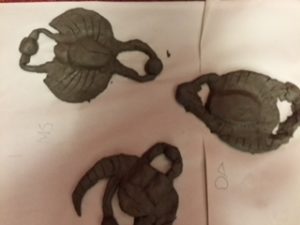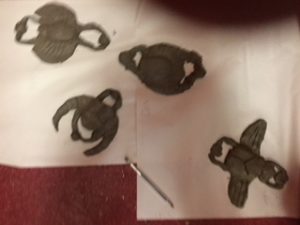Studying Ancient Egypt is proving to be a very fascinating and exciting topic. Today, we looked closely at Scarab beetles and why they were sacred to the Egyptians.
The ancient Egyptians used symbols in their art and religion. One symbol was that of the common scarab bug, a beetle found all over ancient Egypt. The scarab bug symbolized the restoration of life.
The scarab was a popular design for good luck charms, for seals used to stamp documents, and for jewellery made from clay or precious gems.
The rich colors used in the scarab design had meaning.
Red signified the god, Ra. Touches of yellow were used to symbolize the sun and the desert. Blue symbolized the Nile and green was the symbol for growth.
Why do scarab beetles push around balls of dung?
When a scarab beetle decides to be a parent, they lay their eggs inside some animal dung. The beetle then moulds the dung into a neat little ball. The ball that contains their eggs can be easily rolled around. That way they can take their unhatched babies with them wherever they go. It’s actually pretty clever.
Why did scarab beetles become sacred?
When the eggs hatch, tiny babies run out of the ball. To anyone watching, it looks like the babies magically appear out of nowhere. Because of this, the scarab beetle was believed to have magic powers. The beetle symbolized creation, life, and even rebirth. It was associated with the creation god Atum.
After the children had learnt about these precious creatures, work began on making their own. Take a look at the beetles so far. They will be painted and decorated next week.






